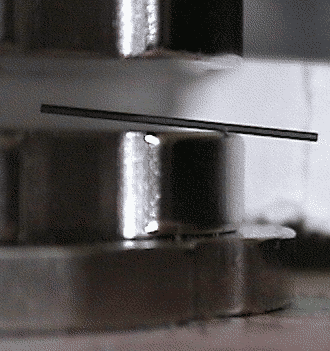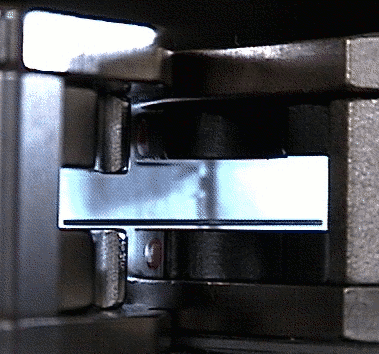
Yes, you too can have your very own magnetically levitated object. You don't get much of a choice as to the object you levitate, and you'll have to sacrifice a couple of the big old half-height hard drives to get the magnets, but hey it's good fun.

This is a fine pencil lead from a mechanical pencil partially levitated on a single "voice coil" magnet assembly. Doing this is a good test to see if the magnet is strong enough or the pencil lead is of the right type of graphite. The phenomenon that allows this to happen is called diamagnetism, and the pencil lead is chosen because graphite, especially pyrolytic graphite, is a relatively strong diamagnet and is also has very low density.
Ferromagnetic materials (like steel, or other magnets) cannot be levitated without electromagnets actively balancing the object (unless they are moving/spinning as in the Levitron toy top or via various other tricks.)
The pencil lead will levitate along a line running between the two poles, above the magnetic circuit between the two poles on the same face, and between the legs of the magnetic circuit between the two faces. Unfortunately, the mimima in the magnetic field is only in two dimensions, because the field is stronger in the middle of the assembly.

In order to get a field minima in the third dimension I had to use two sets of magnets. The silver magnet set shown is really very powerful and I wish I could remember what hard drive they came out of. The black ones are "good enough" and come from a DEC RZ28 drive. (Update: some newer magnets despite being thinner have proved quite sufficient.)

With the magnets arranged as shown, after cleaning any accrued dust or metal shavings out, it takes a good amount of patience to find the right length of pencil lead, and shim the magnets and supporting surface so everything is very even. Getting the object to actually levitate takes a very steady hand and even more patience.


Here are a couple more shots shining some light in to highlight the space under the levitating object. As you can tell both my photography skills and equipment are somewhat limited, so sorry I couldn't get more convincing shots than this, but trust me this does work. The lead will oscillate back and forth several millimeters along its long axis in response to small air currents, and you have to take care not to create any larger breeze or vibration or it will fall right out of the minima.
So there you go. If you try this, enjoy, but do be careful with the magnets. I find that these larger sets from the bigger drives really should be left in one piece with the magnetic circuits well contained by the sheilds -- even at that care should be taken taken not to get them anywhere near any small ferrous objects or loose magnets as they can really get things flying at a high speed and deliver quite a pinch, even moreso than the smaller ones from more modern drives, which are themselves pretty dangerous.
Back to trash hacking main index